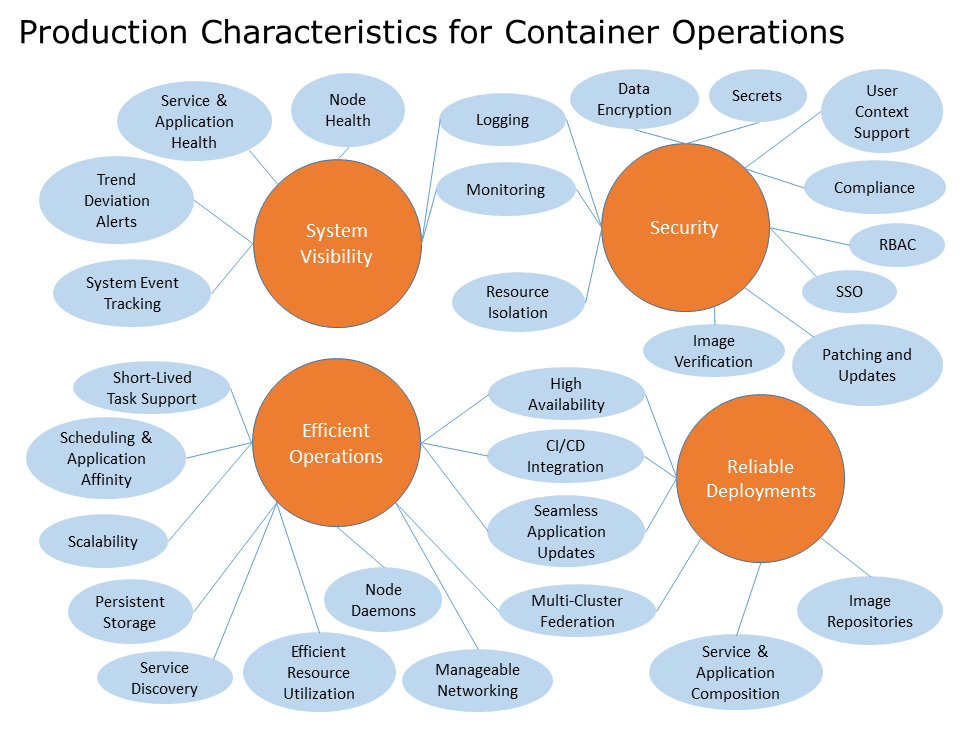So far in this book, we have walked through a number of typical operations using Kubernetes. As we have been, K8s offers a variety of features and abstractions that ease the burden of day-to-day management for container deployments.
There are many characteristics that define a production-ready system for containers. The following diagram provides a high-level view of the major concerns for production-ready clusters. This is by no means an exhaustive list, but it's meant to provide some solid ground for heading into production operations:

We saw how the core concepts and abstractions of Kubernetes address a few of these concerns. The service abstraction has built-in service discovery and health checking at both the service and application level. We also get seamless application updates and scalability from the replication controller and deployment constructs. All of the core abstractions of services, replication controllers, replica sets, and pods work with a core scheduling and affinity rulesets and give us easy service and application composition.
There is built-in support for a variety of persistent storage options, and the networking model provides manageable network operations with options to work with other third-party providers. We also took a brief look at CI/CD integration with some of the popular tools in the marketplace.
Furthermore, we have built-in system events tracking, and with the major cloud providers, an out-of-the-box setup for monitoring and logging. We also saw how this can be extended to third-party providers such as Stackdriver and Sysdig. These services also address overall node health and proactive trend deviation alerts.
The core constructs also help us address high availability in our application and service layers. The scheduler can be used with autoscaling mechanisms to provide this at a node level. Then, there is support for making the Kubernetes master itself highly available. In Chapter 12, Cluster Federation and Multi-Tenancy, we took a brief look at the new federation capabilities that promise a multi-cloud and multi-data center model for the future.
Finally, we explored a new breed of operating systems that give us a slim base to build on and secure update mechanisms for patching and updates. The slim base, together with scheduling, can help us with efficient resource utilization. In addition, we looked at some hardened concerns and explored the image trust and verification tools available. Security is a wide topic and capability matrices exist for this topic alone.
